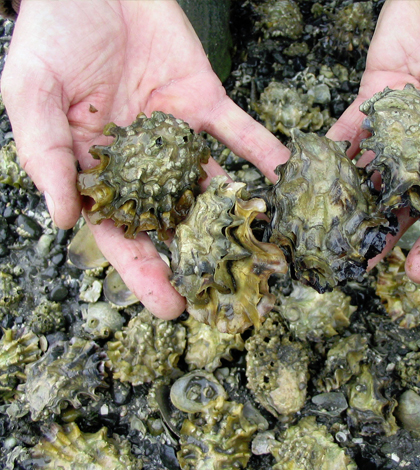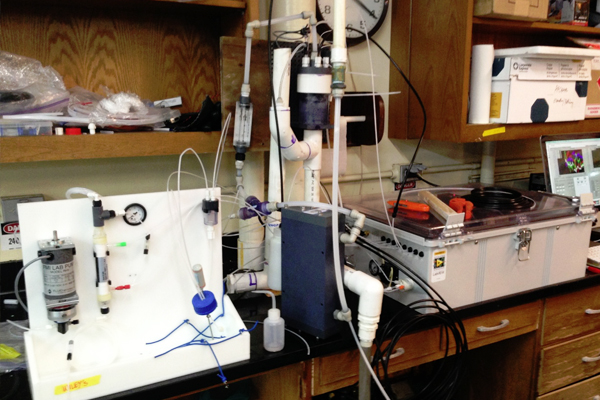Burke-O-Lator to help scientists, shellfish growers deal with ocean acidity

Scientists use a lot of different tech to tackle the issue of ocean acidification, commonly deploying advanced devices on buoys across the world’s seas. But there is a new machine used to study the phenomenon: the Burke-O-Lator.
Instead of getting strapped to a buoy, Burke-O-Lators, developed by a professor at Oregon State University named Burke Hales, are typically installed on ships, according to a release from the University of Washington. And though they don’t look pretty, the machines measure something scientists have wanted to track for some time: the suitability of ocean waters to form calcium carbonates that shellfish use to form their protective shells.
Specifically, Burke-O-Lators measure ocean water’s ability to form aragonite, one of the most soluble calcium carbonate minerals that shellfish use. The machine does this by routing a system of sensors that measure the partial pressure of carbon dioxide, or pCO2, through a single computer, according to a presentation on the tool.
Data from Burke-O-Lators have been added to many ocean observing systems, including the recently launched Pacific Region Ocean Acidification Data Portal. It displays information from a host of ocean acidification networks across the region and was formed by the National Oceanic and Atmospheric Administration.
“This (the new portal) makes valuable data more easily accessible, and it will increase our scientific understanding of how similar or different conditions are throughout the Pacific,” said Jan Newton, oceanographer at the University of Washington’s Applied Physics Laboratory, in a release.

A Burke-O-Lator in Alaska provides ocean chemistry data. (Credit: Burke Hales / Oregon State University)
The data, supplemented by Burke-O-Lators with funding support from the Oregon Legislature, can help shellfish growers by showing them when is best to grow larvae. They can also show when water conditions are best for drawing in water to fill tanks. “For shellfish growers, having access to the data off their local site is important, but the oceanic data is an advanced warning system,” said Newton.
Burke-O-Lators are available commercially from Sunburst Sensors, and marketed under the name SuperCO2. An updated version of the first machine, capable of measuring total carbon dioxide in addition to its partial pressure, is also available exclusively through Burke Hales.
Top image: Acidic seawater is corrosive and contains less of the minerals oysters need to build their shells. (Credit: Marc Dewey / Taylor Shellfish)





David Burke
September 16, 2015 at 7:31 am
What were the methods that were use to measure the suitability of the oceans before the Burke-o-Lators? Is this new device cost effective as compared to previous techniques?